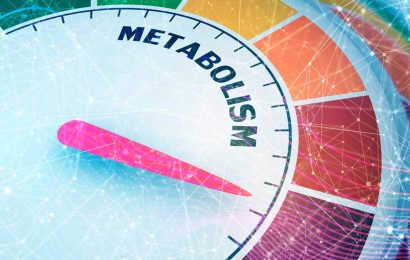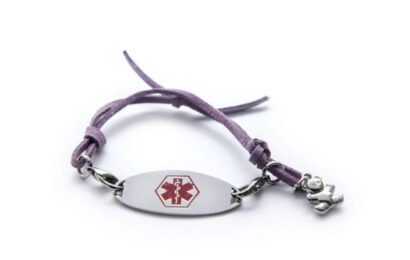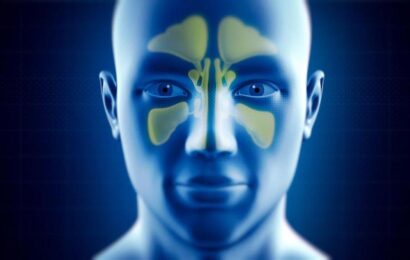Everyone gets cold fingers and toes at times, especially after being outside for a considerable amount of time on a chilly day. But some people experience cold fingers or toes to an extreme where they become numb, and the skin turns white or blue. These may be a sign of a condition called Raynaud’s syndrome.
What is Raynaud’s syndrome?
Named after Maurice Raynaud, a physician who first described this condition in 1862, Raynaud’s syndrome is “a condition that causes the blood vessels in the extremities to narrow, restricting blood flow,” according to the National Institute of Arthritis and Musculoskeletal and Skin Diseases (NIAMSD) of the National Institutes of Health (NIH). Sometimes called Raynaud’s disease or Raynaud’s phenomenon, this condition usually affects (attacks) the fingers and toes, although it may occur in other areas of the body, such as the ears or nose. Cold temperatures or emotional stress can cause an attack.
To get cutting-edge diabetes news, strategies for blood glucose management, nutrition tips, healthy recipes, and more delivered straight to your inbox, sign up for our free newsletter!
There are two types of Raynaud’s syndrome:
- Primary: This happens on its own, and it has no known cause. This is the more common type.
- Secondary: This can result from an injury, other diseases, or certain medicines, and tends to be more serious, needing more aggressive treatment.
Who’s at risk for Raynaud’s syndrome?
Anyone can get Raynaud’s syndrome, but certain people are more likely to have it than others. The risk factors for the two types of Raynaud’s are different.
Primary Raynaud’s is more common in:
- Women
- People under the age of 30 (often starting in the teenage years)
- Those with a family history of this condition
- People who live in colder climates (but people living in warmer climates can have Raynaud’s, too)
Secondary Raynaud’s is more common in:
- Those who have certain diseases, including lupus, scleroderma, Sjogren’s syndrome, rheumatoid arthritis, thyroid disorders, clotting disorders, and carpal tunnel syndrome.
- People who take medicines used to treat high blood pressure, migraines, or ADHD. Birth control pills, some cancer medicines, and over-the-counter cold medicines can also increase the risk.
- People exposed to certain chemicals or who use vibrating machinery, such as jackhammers.
- People who smoke.
What are the symptoms of Raynaud’s syndrome?
According to the NIAMSD, Raynaud’s syndrome happens when episodes or “attacks” affect certain parts of the body, such as the fingers or the toes, causing them to become cold and numb and change color. Here’s what happens during an attack:
- The skin turns pale or white due to lack of blood flow.
- The area turns blue and feels cold and numb due to a lack of circulation.
- As the area warms up and circulation returns, it may become red and can swell, tingle, burn, or throb.
- In severe cases, sores can develop on the fingers or toes, and gangrene may set in, causing infection, or leading to amputation. This is rare, however.
Usually, only one finger or toe is affected, initially, but it may move to other fingers or toes. The thumbs are less likely to be affected. Attacks can last a few minutes or a few hours.
How is Raynaud’s syndrome diagnosed?
There’s no one blood test that diagnoses Raynaud’s; usually, it’s diagnosed based on symptoms. If Raynaud’s is suspected, your health care provider may perform certain tests to determine the type of Raynaud’s (primary or secondary).
- Nailfold capillary microscopy: A magnifier is used to look at the base of the fingernails for any signs of changes in capillaries, which is a sign of secondary Raynaud’s.
- Antinuclear antibodies (ANA) test: This is a blood test that can indicate that the immune system is mistakenly attacking body tissue, and a positive result is common in people who have autoimmune or connective tissue disorders, says the Mayo Clinic.
- Erythrocyte sedimentation rate: This test measures the rate at which red blood cells fall to the bottom of a test tube. A faster rate could be a sign of an autoimmune or inflammatory condition.
How is Raynaud’s syndrome treated?
There is no cure for Raynaud’s syndrome. Treatment of this condition is focused on specific goals, according to the NIAMSD:
- Reduce the number of attacks
- Reduce the severity of attacks
- Prevent tissue damage
If you have Raynaud’s, you can meet these goals by:
- Avoiding or limiting going out in extremely cold weather.
- Dressing for the cold by wearing layers and wearing thermal gloves and thick socks, as well as a hat.
- Wearing gloves when handling cold or frozen items.
- Bringing a sweater or jacket when going into air-conditioned spaces.
- Keeping your hands and feet dry.
- Not smoking or vaping, since nicotine can cause blood vessels to constrict.
- Reviewing your medications with your provider, as some can bring on attacks.
- Doing your best to limit stress.
- Staying active — physical activity increases blood flow.
- Acting quickly if an attack occurs by placing your hands or feet in a warm place (try under your arm pits!) and massaging the affected area. However, avoid hot water (warm water is OK) and heating pads. Also, talk with your provider to find out if hand warmers are safe for you to use.
For more severe cases of Raynaud’s, medication may be helpful, including calcium channel blockers or vasodilators to help relax the blood vessels. Also, nerve surgery and injections of numbing medicine or Botox may be options.
To learn more about Raynaud’s syndrome, visit the Raynaud’s Association.
Want to learn more about protecting the health of your hands and feet? Read “Pins and Needles in Hands or Feet,” “Diabetes Hand Disorders: Pointing Out the Problems,” “Diabetes and Your Hands,” and “Tips for Healthy Feet With Diabetes.”





